There’s something timeless and magical about the process of growing new life from a simple cutting. Whether you’re an eager novice just stepping into the world of gardening or a seasoned green thumb looking to expand your horticultural repertoire, mastering the art of propagation is an invaluable skill. Through this ancient yet continually evolving practice, you can multiply your beloved plants, preserve heirloom varieties, and even share the joy of gardening with friends and family by gifting them a living piece of your garden.
The beauty of growing plants from cuttings lies in its accessibility and simplicity, yet it offers endless possibilities for experimentation and creativity. In this article, we will demystify the process, guiding you through the essentials of selecting the right plants, preparing your cuttings, and ensuring they thrive. You’ll discover how to nurture a humble snippet into a flourishing plant, unlocking the secrets of successful propagation that gardeners have cherished for generations.
Whether you’re aiming to expand your indoor jungle or create a lush outdoor landscape, learning how to grow plants from cuttings will empower you to cultivate the garden of your dreams with confidence. We’ll explore tips and techniques that cater to various plant types and environmental conditions, ensuring your success regardless of where you garden. By the end of this journey, you’ll not only have a deeper understanding of plant propagation but also a renewed appreciation for the life cycles that connect us to nature.
Select Healthy Parent Plant
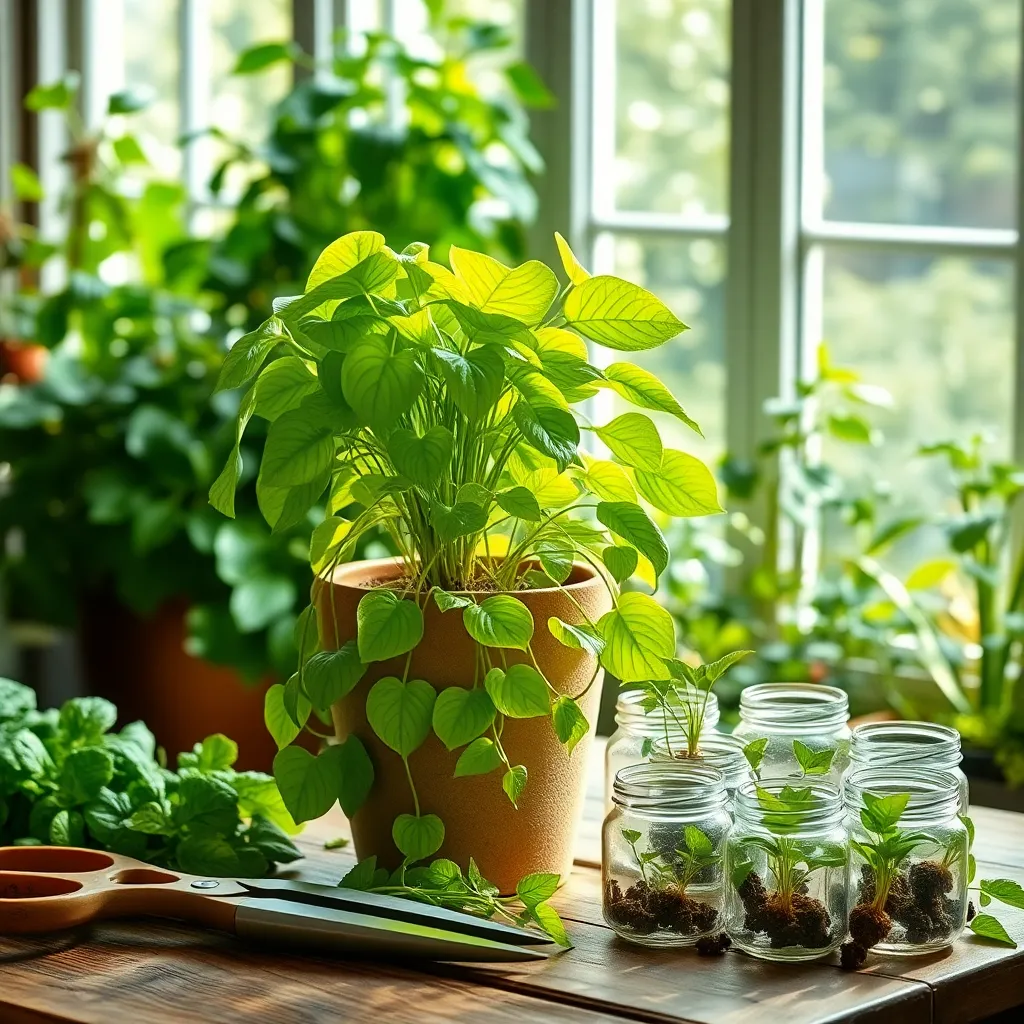
To successfully grow plants from cuttings, it is crucial to start with a healthy parent plant. Choose a plant that is vigorous, disease-free, and has a strong growth habit, as this will increase the likelihood of successful propagation.
Examine the plant closely to ensure there are no signs of pests or diseases, such as discolored leaves or unusual spots. A plant in its prime, typically during its active growing season, will provide the best cuttings for propagation.
When selecting the parent plant, look for one with healthy, well-developed stems. These stems should not be too woody or too soft, as balance is key for successful root development in cuttings.
Consider the plant’s watering needs and ensure it is well-hydrated before taking a cutting, as this will help maintain its health and vitality. Ideally, water the parent plant a day before you plan to take cuttings to ensure the plant is adequately hydrated without being waterlogged.
Cut Stems at Correct Angle
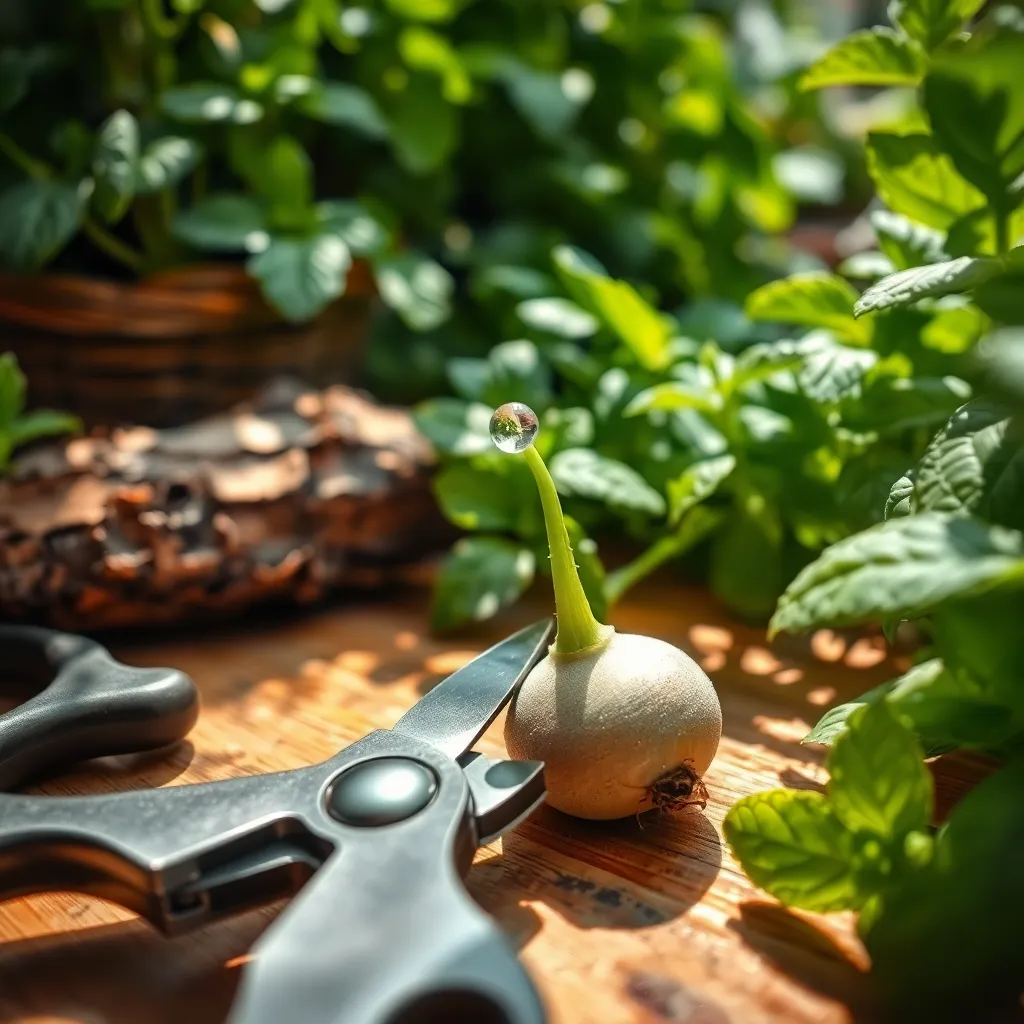
When propagating plants from cuttings, it’s crucial to cut stems at the correct angle to promote optimal growth. Aim for a 45-degree angle cut just below a node, as this increases the surface area for rooting and encourages the uptake of water and nutrients.
Using a clean, sharp knife or pruning shears helps prevent damage and disease in your cuttings. Sanitize your tools before each use with rubbing alcohol or a bleach solution to avoid transferring pathogens that could hinder the cutting’s development.
Positioning your cut at an angle also prevents water from sitting on the cut surface, which can lead to rot. This simple technique is particularly beneficial for softwood and semi-hardwood cuttings, which are more susceptible to decay.
For those working with thicker stems or woody plants, ensure the cut is clean and smooth to facilitate quicker root formation. If you’re dealing with a plant that has a high sap content, allow the cut surface to dry for a few hours before planting to prevent sap from sealing the cut end.
Dip in Rooting Hormone
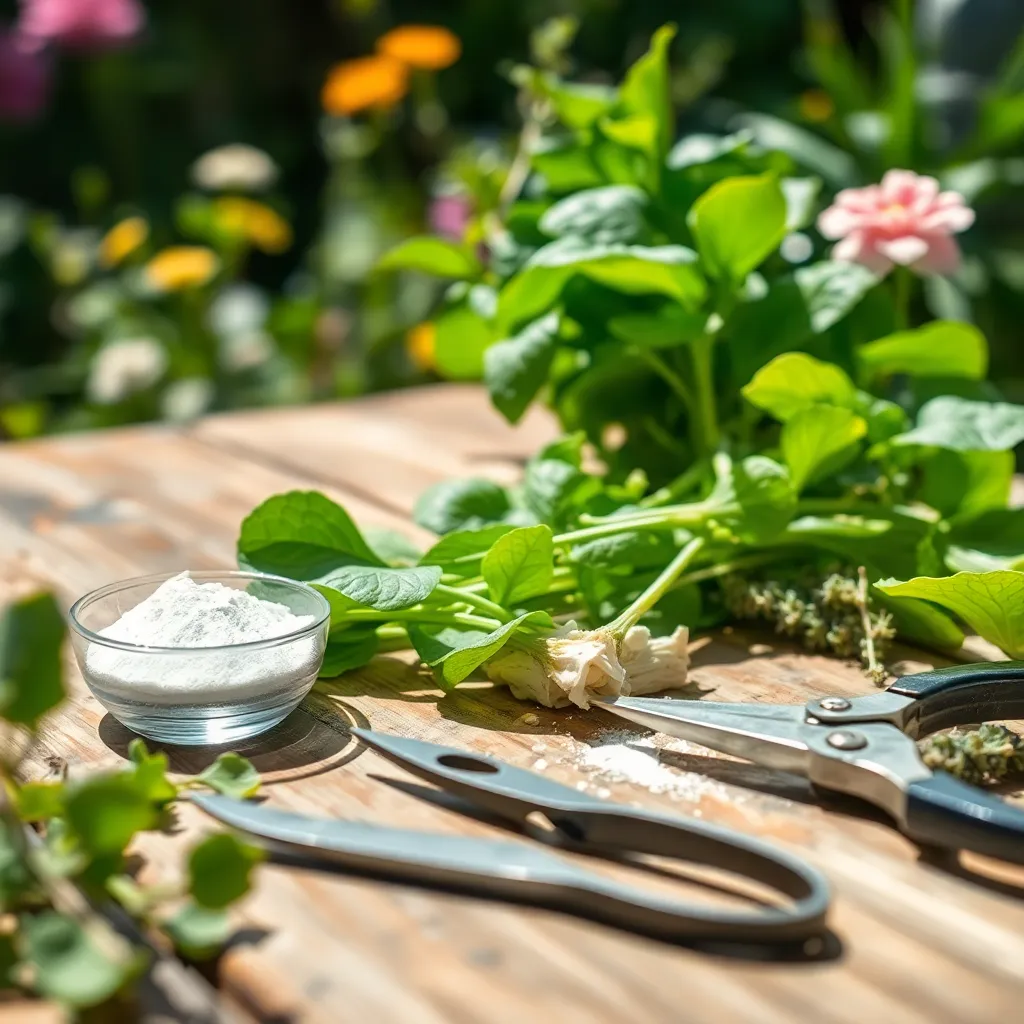
Before planting your cuttings, a vital step is to dip them in rooting hormone. Rooting hormone enhances the chances of root development by providing the necessary stimuli for root growth.
Begin by ensuring the ends of your cuttings are cleanly cut and slightly moist. This moisture allows the rooting hormone powder to adhere better to the cutting’s surface.
Next, dip the cut end of the cutting into the rooting hormone, ensuring it’s evenly coated. A light tap can remove excess powder, preventing clumping, which might hinder healthy root development.
For best results, use a separate container to hold a small amount of rooting hormone. This practice prevents contamination of the main supply and keeps the hormone effective for future use.
Rooting hormones are available in various forms: powder, liquid, and gel. Each type has its advantages, but powder forms are often recommended for beginners due to their ease of use and storage.
When working with tender or soft-stemmed cuttings, consider using a diluted liquid rooting hormone. This can offer gentler encouragement for root formation, especially for plants prone to rotting.
After dipping, plant the cutting immediately into a suitable growing medium. Opt for a well-draining mix, such as a blend of peat and perlite, to provide the right balance of moisture and air for root development.
Place Cuttings in Soil
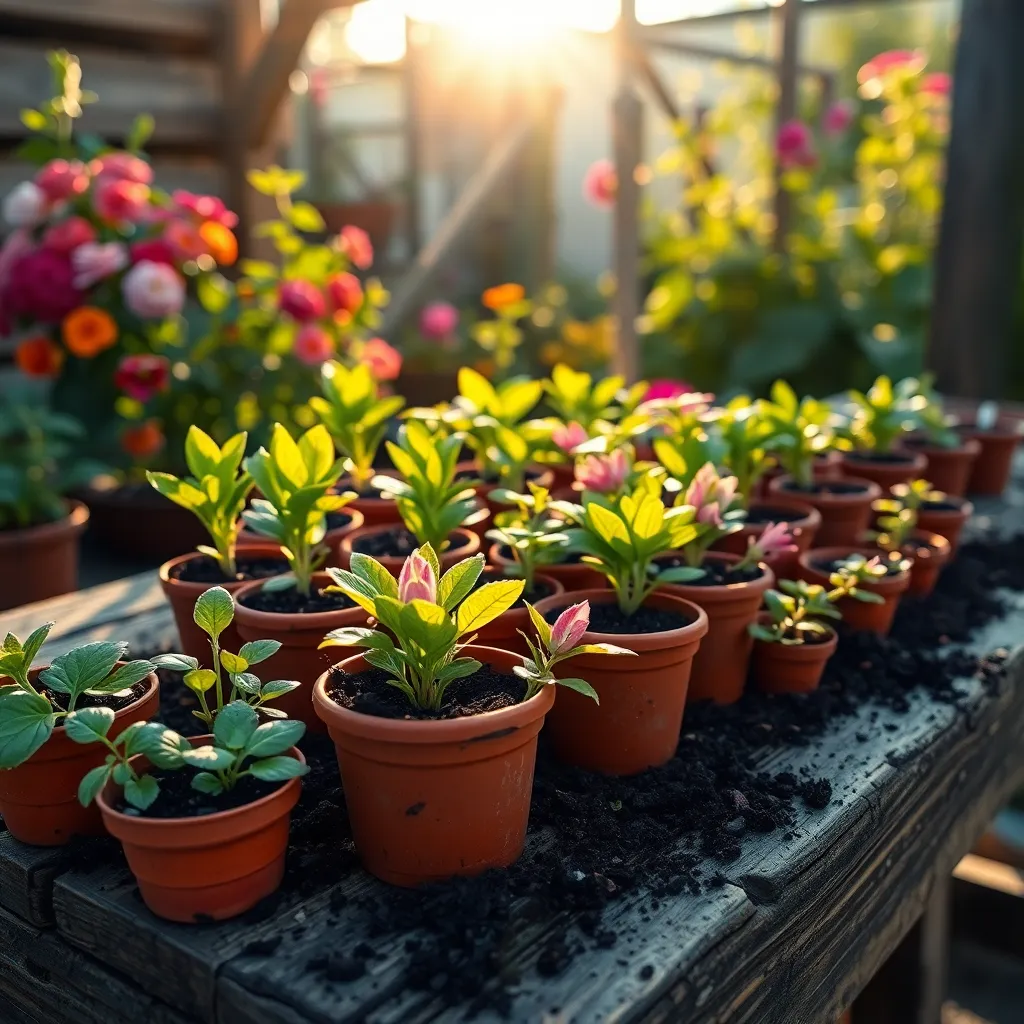
Once you’ve dipped your cutting in rooting hormone, it’s time to place it into the soil. Choose a well-draining potting mix specifically formulated for cuttings, which often includes a blend of peat moss, perlite, and vermiculite.
Avoid compacting the soil too much as this can restrict root growth. Gently insert the cutting into a pre-made hole to prevent removing the rooting hormone, ensuring at least one node is below the soil surface.
After placing your cutting in the soil, water it lightly to settle the soil around it. Be careful not to overwater, as excessive moisture can lead to rot; a misting spray is often sufficient at this stage.
To create a humid environment conducive to root development, cover the pot with a clear plastic bag or use a propagation dome. Ensure the cover doesn’t touch the cutting by using small stakes or sticks to keep it elevated, allowing enough airflow to prevent fungal growth.
Place the potted cutting in a location with bright, indirect light. Direct sunlight can be too harsh, so aim for a spot that provides warmth without overheating, such as near an east-facing window.
Maintain Moisture and Light
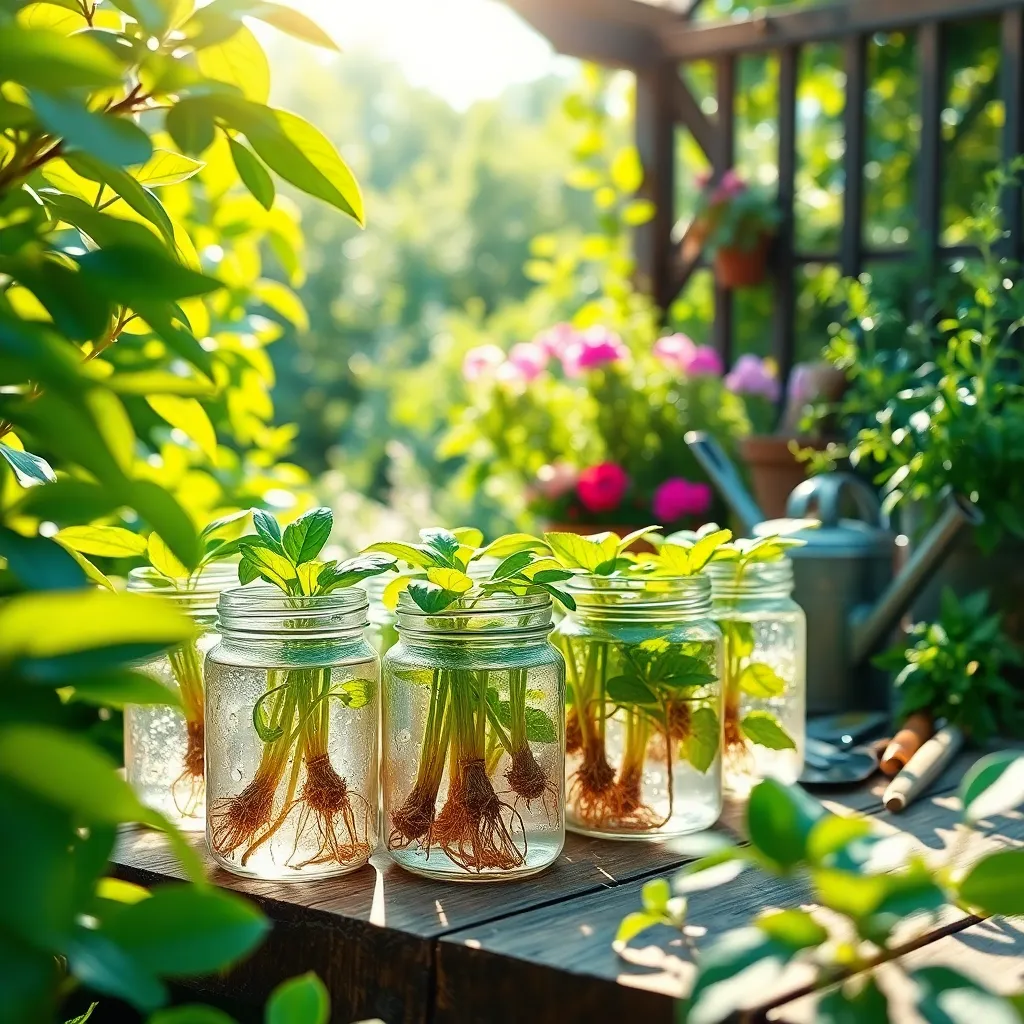
Maintaining the right moisture levels is crucial for the success of plant cuttings. It’s important to water your cuttings thoroughly but avoid saturating the soil, which can lead to root rot.
Consider using a spray bottle to mist your cuttings, ensuring the leaves stay hydrated without over-watering the soil. Frequent misting can be particularly beneficial in dry climates where humidity is low.
To retain moisture effectively, cover the cuttings with a clear plastic bag or a plastic dome. This creates a mini greenhouse effect, keeping humidity high and reducing the frequency of watering.
Light is just as important as moisture for nurturing healthy cuttings. Place your cuttings in a location where they receive indirect sunlight, as direct sunlight can scorch tender new growth.
If natural light is insufficient, consider using grow lights to provide adequate illumination. Position the lights 6-12 inches above your cuttings, and keep them on for 12-16 hours a day to mimic natural daylight.
For those with more experience, experimenting with different light spectrums can optimize growth. Full-spectrum LED grow lights are a great option, providing the full range of wavelengths needed for photosynthesis.
Conclusion: Growing Success with These Plants
In exploring the nurturing journey of growing plants from cuttings, we’ve uncovered five key concepts that mirror the foundation of strong relationships. Firstly, understanding the importance of selecting healthy cuttings reminds us to foster healthy connections. Secondly, creating the right environment highlights the need for a supportive space where relationships can thrive. Thirdly, patience and persistence echo the value of enduring through challenges. Fourthly, providing adequate nutrients parallels offering emotional support and understanding. Lastly, monitoring growth and making adjustments reflect the importance of adapting and growing together.
As an immediate action step, consider identifying one relationship in your life that could benefit from a little extra care, and take a small but meaningful step towards nurturing it today. Whether it’s a phone call, a heartfelt note, or an appreciative gesture, your efforts can plant the seeds for deeper connections.
Make sure to bookmark this article as a handy guide for relationship cultivation, ready to inspire growth whenever you need a refresher. Remember, the skills you cultivate now lay the groundwork for flourishing relationships in the future. Keep nurturing those bonds, for they are the roots of your shared successes and happiness.
